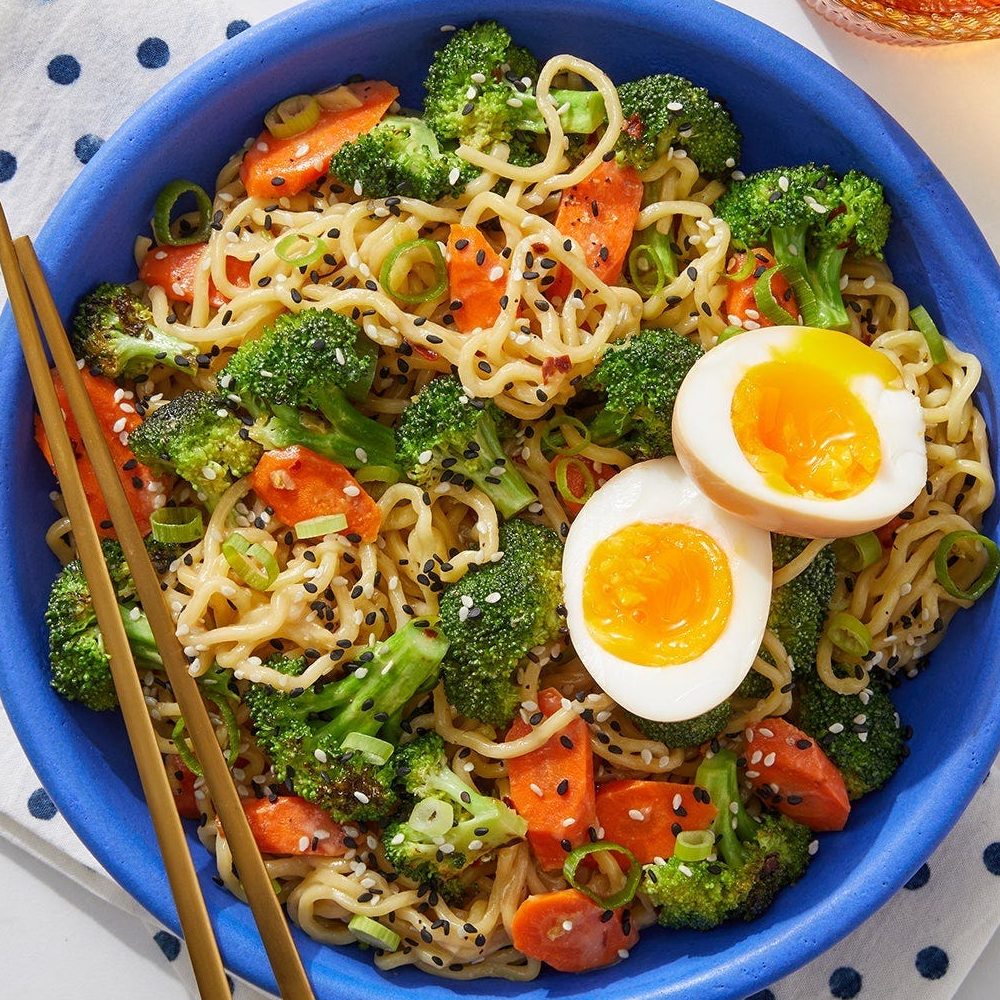Ramen Noodle Mastery: Stove Top Cook Times Explained
The Art of Boiling Water for Ramen Noodles
Achieving the perfect bowl of ramen starts with mastering the water boiling step. It’s not just a matter of filling a pot and waiting for bubbles; precise temperatures and timings are critical to avoid soggy, overcooked noodles. How long to cook ramen noodles on stove?Here’s how to boil water for ramen with finesse:
Start with Cold, Fresh Water
Begin by filling your pot with cold water. Tap water is generally fine, but for a purer taste, consider filtered water. This will ensure your ramen’s flavor remains unaltered.
Wait for a Rolling Boil
Patience is key. Wait for a rolling boil, not just a few bubbles at the pot’s base. This means the water has reached 212°F (100°C) and will cook noodles evenly.
Use the Right Amount of Water
Too much water can dilute your broth, while too little might not cook your noodles thoroughly. Check the package for the exact water amount needed – usually around 2-3 cups.
Basket Inserts for Easy Removal
If you have a basket insert for your pot, use it. This makes removing the noodles effortless and helps prevent accidents or spills.
Boiling water seems simple, but attention to these details is the foundation of excellent ramen noodles on the stove. Perfect boil, perfect noodles.
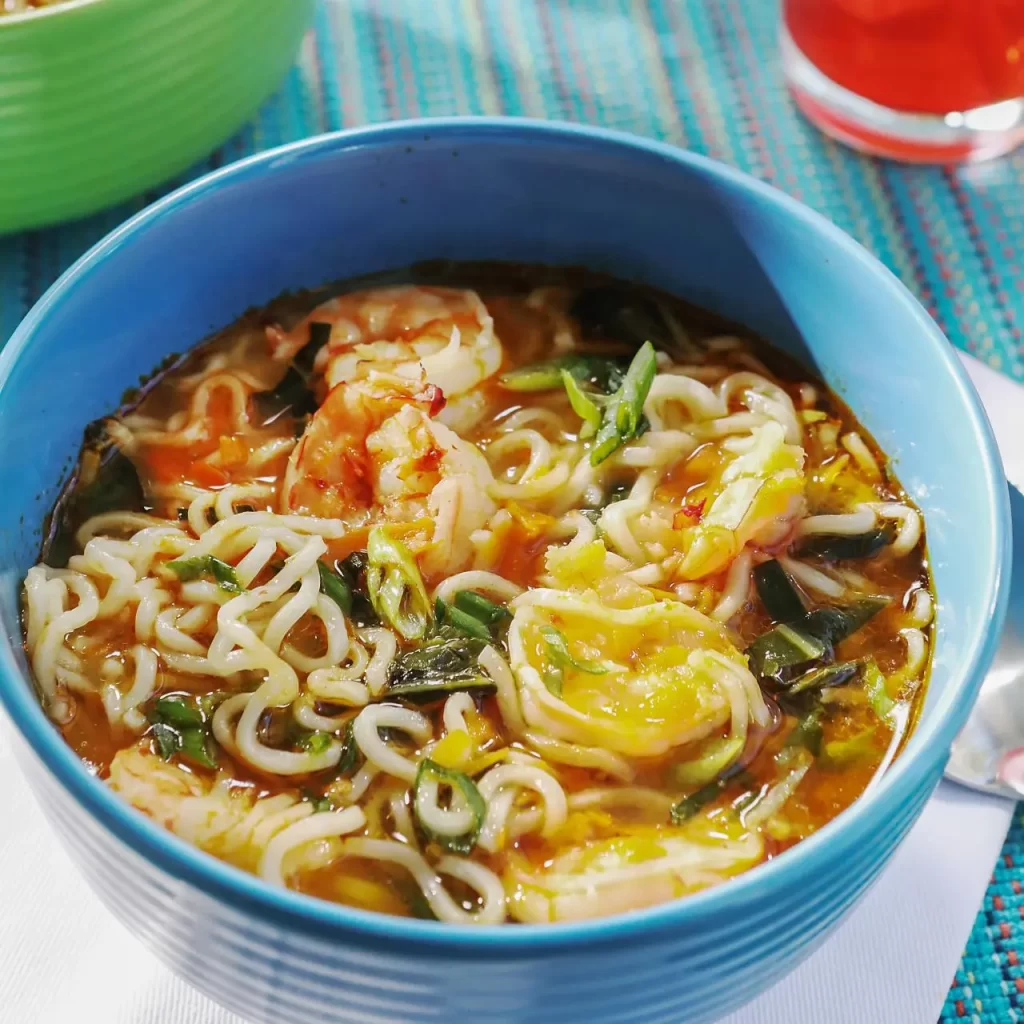
Timing Is Everything: Optimal Cooking Durations
How long to cook ramen noodles on stove? Indeed, knowing how long to cook ramen noodles on the stove is crucial. Here are some general guidelines for achieving al dente ramen noodles to avoid a mushy mess:
Standard Cooking Time
Aim for 3-4 minutes of boiling time for most ramen brands.
Adjust for Altitude
Cook slightly longer at high altitudes due to lower boiling temperatures.
Different Brands, Different Times
Consult your ramen’s package; times can vary with noodle thickness and type.
Keep an Eye Out
Watch your noodles as they cook. They change quickly from perfect to overcooked.
To sum up, nailing the cook time for ramen noodles involves a little attention and precision. Stick to the package recommendations, adjust as needed, and enjoy your perfectly cooked ramen.
The Secret to Cooking Noodles Evenly
Cooking noodles evenly is crucial for the perfect ramen. Follow these tips for consistent results.
Choose the Right Pot
Pick a pot that is large enough to give noodles space. This prevents sticking and clumping.
Use Ample Water
Ensure water covers noodles by at least an inch. This helps them cook uniformly.
Stir Gently
Stir noodles gently. This separates them and promotes even cooking.
Mind the Heat
Keep the heat consistent. Boiling water should not be too vigorous as it can lead to unevenly cooked noodles.
Time It Right
Set a timer as per package instructions. This helps avoid overcooking or undercooking.
By applying these methods, you can achieve evenly cooked noodles every time. Remember, the goal is to prepare a delectable ramen bowl with perfectly cooked noodles.
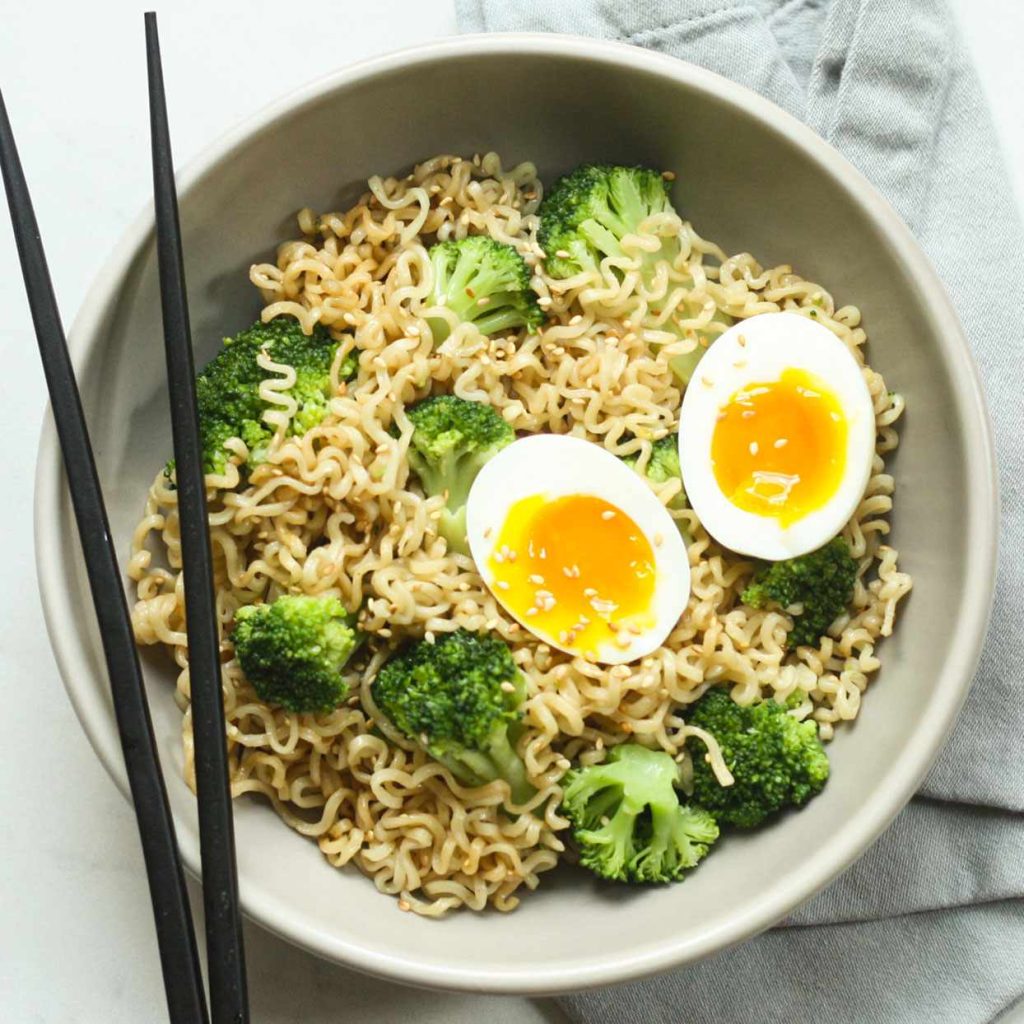
To Stir or Not to Stir: Keeping Ramen Noodles Clump-Free
Stirring ramen noodles is essential for a uniform texture. Without stirring, noodles may stick together and cook unevenly, resulting in a dish with varying textures—from mushy to undercooked. Here’s a simple guide to keeping your ramen noodles clump-free:
Begin Stirring Early
Start stirring your ramen right after you add them to boiling water. This initial stir separates them.
Be Consistent but Gentle
Stir your noodles every minute or so. Use a fork or chopsticks, and be gentle to avoid breaking noodles.
Avoid Over-Stirring
Too much stirring can damage noodles, so find a balance. Stir enough to prevent sticking at the bottom.
By following these stirring tips, you ensure each noodle cooks evenly and stays free from clumps. This allows them to reach the perfect texture that elevates the whole ramen experience.
Toppings and Add-Ins: Enhancing Your Ramen Bowl
A simple bowl of ramen noodles can transform into a culinary delight with the right toppings and add-ins. Adding these elements not only enhances the flavor but also boosts the nutritional value of your meal. Here’s how you can embellish your ramen bowl to create a more fulfilling and tasty experience:
Choose Your Protein Wisely
Select a protein such as chicken, beef, tofu, or egg to add substance to your noodles. For example, a soft-boiled egg can offer a creamy touch, while sliced chicken adds a hearty element. Make sure to cook your protein properly before adding it to the ramen.
Incorporate Fresh Vegetables
Fresh veggies like bok choy, green onions, or mushrooms introduce crunch and nutrients. Slice or chop your vegetables thinly to ensure they cook quickly in the hot broth.
Don’t Skimp on the Greens
Add greens like spinach or kale at the end of the cooking process. They need just a minute to wilt and blend with the other flavors in your ramen bowl.
Experiment with Spices and Sauces
Spice things up with a dash of sriracha or a sprinkle of chili flakes for heat. A few drops of sesame oil or a spoonful of miso paste can add depth to the broth.
Get Creative with Additional Toppings
Some other popular toppings include corn, bamboo shoots, and nori (dried seaweed). Pickled ginger or a squeeze of lime can introduce a new dimension of taste.
Remember, the key is to add these toppings right after the noodles are cooked. This ensures they retain their texture and flavor, elevating your ramen experience. Be mindful of the cook time and add-ins to make a ramen bowl that suits your taste perfectly.
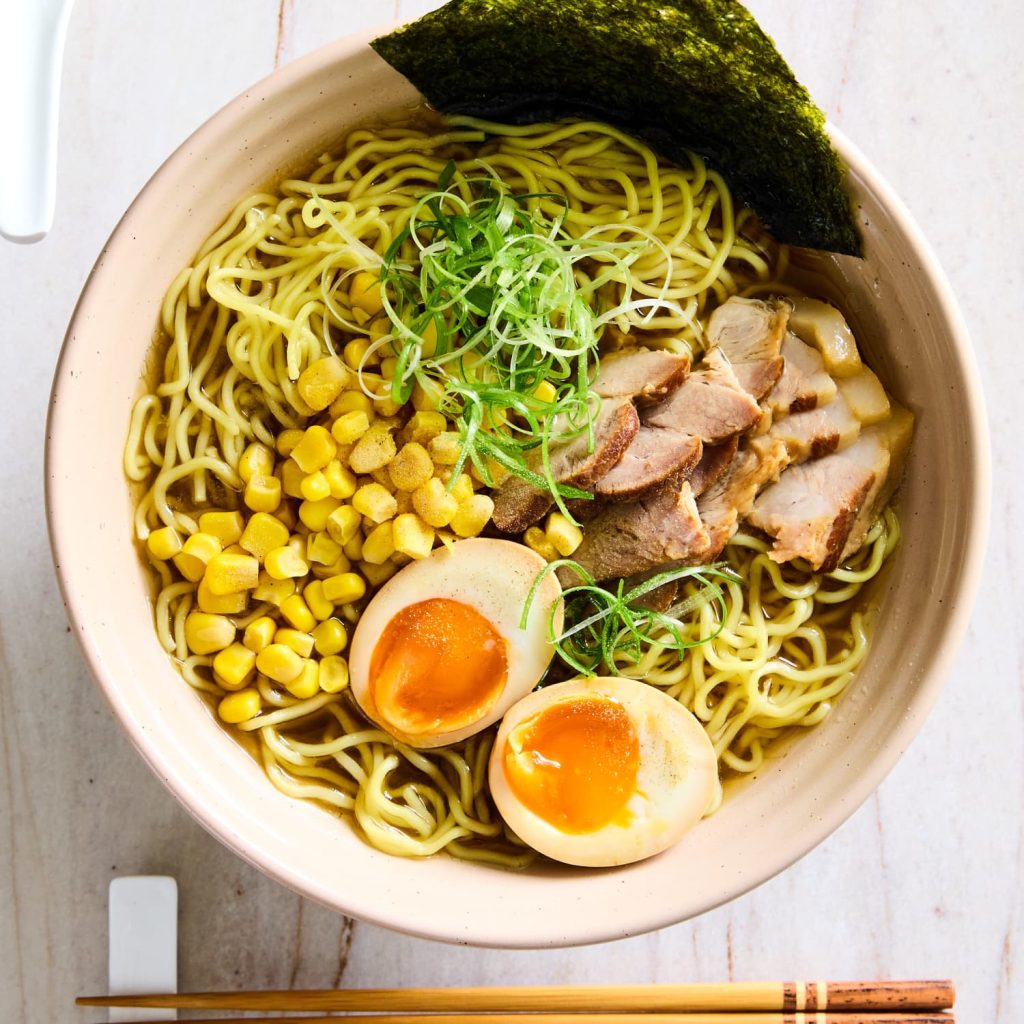
Ramen Customization: Adjusting for Texture Preferences
Ramen texture is key to an enjoyable meal. How you cook your ramen can change its texture significantly. Tailoring the cooking time and technique allows for customization to personal taste preferences. Here’s how to adjust your ramen for different textures:
For Al Dente Noodles
To achieve firmer, ‘al dente’ noodles, shorten the cooking time. Start checking the noodles after two minutes of boiling. This ensures they remain slightly firm to the bite.
For Softer Noodles
Prefer softer, more absorbent noodles? Extend the cooking time slightly. Allow the noodles to boil for about five minutes. This makes them soak up more broth and flavors.
Experimenting with Cooling Techniques
Cooling cooked noodles briefly under cold water stops the cooking process. This technique can preserve a firmer texture even if noodles were fully cooked.
Adjusting Water Temperature
Starting with very hot boiling water accelerates the cooking. For a slower, more controlled cook, use slightly lower temperatures. This method is great for fine-tuning the noodle texture.
Stirring: A Crucial Factor
Stirring not only prevents noodles from sticking but also affects texture. Gentle stirring is recommended for even cooking, preventing mushy noodles.
Each of these techniques can help you customize the texture of your ramen noodles. Feel free to combine different methods to find your perfect bowl!
Elevate Your Ramen with the Right Technique
Perfecting your at-home ramen comes down to technique. How long to cook ramen noodles on stove?Making superior ramen isn’t just about boiling noodles. There are a few more steps to elevate your game.
Master the Water Boiling Process
The water boiling process sets the stage for your ramen’s texture. Make sure to bring water to a full rolling boil before adding noodles. This ensures they cook evenly.
Gentle Stirring Is Key
Avoid noodle clumps with gentle stirring. Stir your ramen occasionally, not constantly. This keeps textures uniform without breaking noodles.
Know When to Add Toppings
Add toppings at the right time for the perfect bite. If you’re using vegetables, place them in the pot a minute before the noodles are done. It gives them just enough time to soften without losing crunch.
Personalize the Cooking Time
Take charge of your ramen’s texture. For firmer noodles, cook for two minutes less than the package suggests. For softer noodles, add an extra minute. Watch the pot to find your ideal noodle texture.
Use High-Quality Noodles
The quality of noodles can change the cooking dynamics. Fresh, organic noodles may need more cook time but offer a better texture and taste.
Focus on the Broth Flavor
Good ramen is also about the broth. Experiment with the seasoning packet, adding your own spices, a splash of soy sauce, or a dollop of miso for depth.
Apply these simple yet effective techniques, and notice how your average bowl of ramen transforms into a dish with restaurant-quality appeal.
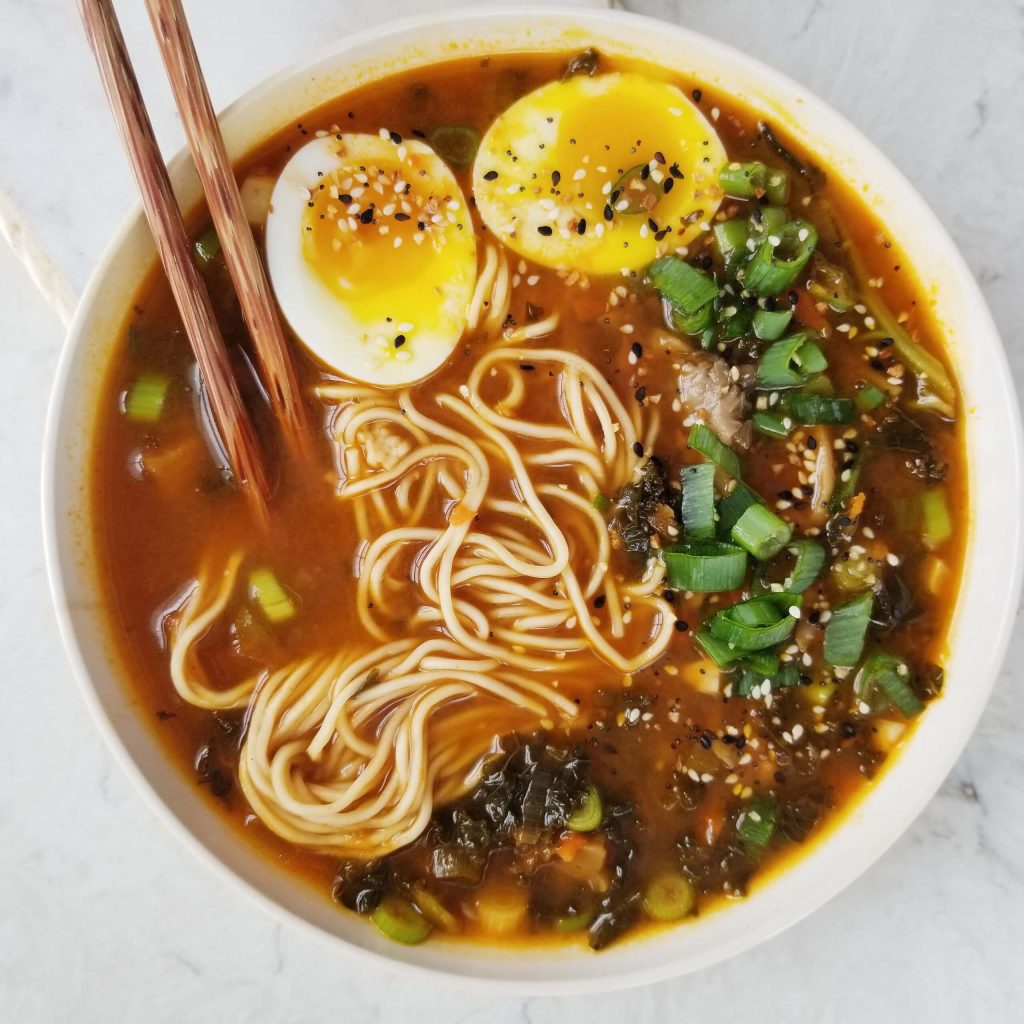
The Impact of High-Quality Noodles on Cook Time
The quality of the noodles dramatically affects how long to cook ramen noodles on the stove. How long to cook ramen noodles on stove?High-quality noodles, often organic and less processed, require adjusted cook times to achieve the perfect texture. The denser and less processed they are, the longer it may take them to reach the desired al dente state.
Organic Noodles Need More Time
Organic noodles are typically less processed than their non-organic counterparts. Because of this, they often take a bit longer to cook fully on the stove. You might find that while standard noodles take about 3-4 minutes, organic noodles could need an additional minute or two to reach the perfect firmness.
Freshness Affects Cooking Speed
Fresh noodles react differently to heat compared to dried ones. Fresh noodles, because they contain more moisture, generally cook faster. This means you might need less time on the stove to get them just right.
Texture Variations
High-quality noodles come in various textures, from chewy to soft. Each type may require different cooking times for optimal results. The way these noodles interact with boiling water can vary, so adjusting the time depending on the desired texture is crucial.
Understanding these variations helps in customizing the cook time for your ramen. It ensures that regardless of the noodle’s quality, they always come out perfectly cooked. Always refer to the package instructions and adjust as needed based on these factors.
